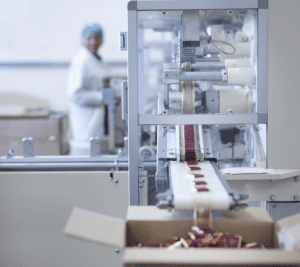5 Ways Food & Beverage Companies Can Benefit from the Industrial Edge
Credit to Author: Paolo Colombo| Date: Fri, 15 Nov 2019 17:30:14 +0000
By adopting digital transformation technologies, companies in the food and beverage industry are poised to address some longstanding pain points that will bring significant bottom-line benefits as well as gains in meeting sustainability and worker safety goals. But it all hinges on having adequate compute resources at the industrial edge.
Digital transformation involves the use of intelligent devices and sensors to collect data on equipment and processes employed in the food and beverage business. The idea is to bring new efficiencies to each step, from farms and manufacturing, to supply chain and delivery to retailers.

Benefits of Digital Transformation
When implemented effectively, food and beverage companies stand to realize significant gains in the following five areas.
1. Maximizing asset value
Leveraging the power of Internet of Things (IoT) technology, big data and analytics, food and beverage companies can realize capital expense (CapEx) savings of up to 30% by making their existing assets last longer. Instrumenting equipment such that it can produce data on its health enables analytics and predictive maintenance. By comparing current data with a set baseline, companies can determine when a given piece of equipment isn’t performing as it should, in time to schedule maintenance. Such an approach ensures equipment is always at peak performance and extends the life of these valuable assets.
2. Improving operations
Digital technologies are required to keep up with the sheer volume of data that is now required in the food and beverage industry throughout the supply chain. The number of stock keeping units (SKUs) each company deals with increases over time and each SKU has many data points connected to it describing each batch, raw materials, production runs and so on. The result is millions and millions of data points to keep track of. What’s more, data on many processes such as packaging lines needs to be processed in real time, or close to it. Implementing on-site compute and software solutions can transform operations to improve efficiency, profitability and yield, while boosting flexibility to meet market demands.
3. Manage quality and compliance
Much of that product data is also required to keep track of product quality and to keep in compliance with various government regulations. Food and beverage companies are also under pressure to be completely transparent about the sources of food, leading to the need for granular levels of traceability throughout the supply chain – from farm to fork. Digital technologies can help companies meet these challenges while increasing product data accuracy up to 17%.
4. Meeting energy and sustainability goals
Food and beverage companies are also under pressure to improve energy efficiency and sustainability efforts. Here again, tools that can optimize equipment utilization and monitor operational efficiency while ensuring optimal use of utilities including energy and water can deliver significant savings. It’s not uncommon to see energy consumption reduced by 35%.
5. Improved worker safety and empowerment
Finally, digital technologies can improve the safety of food and beverage workers and empower them by providing real-time information and digital tools for better operations decisions and easier maintenance. Immersive technologies such as augmented reality and operating training simulators help train workers, delivering increases in efficiency, safety and productivity. A survey of more than 600 companies by Capgemini Research Institute found more than 75% of companies with large-scale augmented reality/virtual reality (AR/VR) implementations report operational benefits greater than 10% stemming from increased efficiency, productivity, and safety.
Digital Transformation Demands Industrial Edge Data Centers
Transformational technology can bring all of these benefits to food and beverage companies. But given the real-time nature of these applications, and regulations that often require data to be stored locally, industrial edge data centers will likely be required. Think of industrial edge data centers as the bridge to help you usher in digital transformation to achieve increased work safety, operational efficiencies and sustainability.
What types of solutions are needed at the industrial edge? Food and beverage companies will need to turn to solutions that can be used to monitor and control systems not just in plants, but up and down the supply chain. An example of solutions that offer easy, actionable insights to optimize end-to-end operations are EcoStruxure for Food and Beverage and AVEVA’s software.
In addition, micro data center solutions enable the reliable and secure operation of IT equipment in non-IT environments. One example of an applicable micro data center is Schneider Electric’s new compact EcoStruxure Micro Data Center C-Series, which comes with integrated uninterruptible power supply (UPS), protocol data unit (PDU) and security, in an enclosure that’s 60% less intrusive than previous models yet big enough to support large edge servers.
To learn more about how technology can help you in your digital transformation, visit our EcoStruxure for Food and Beverage site.
The post 5 Ways Food & Beverage Companies Can Benefit from the Industrial Edge appeared first on Schneider Electric Blog.